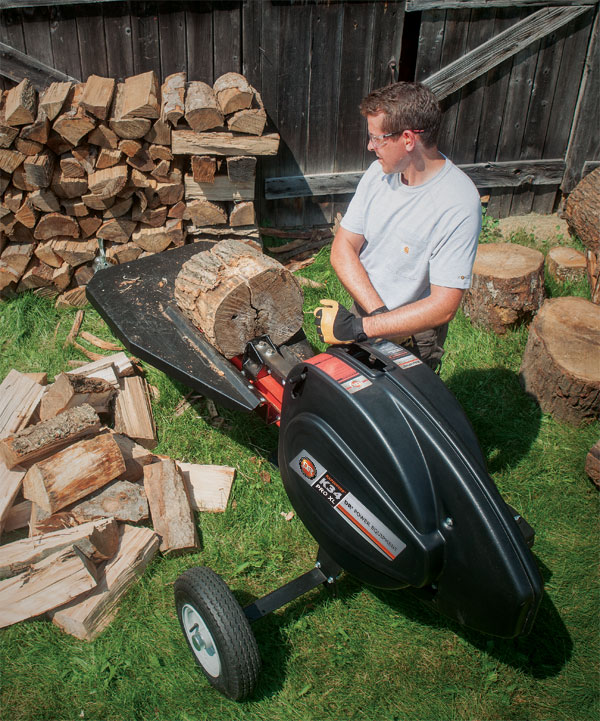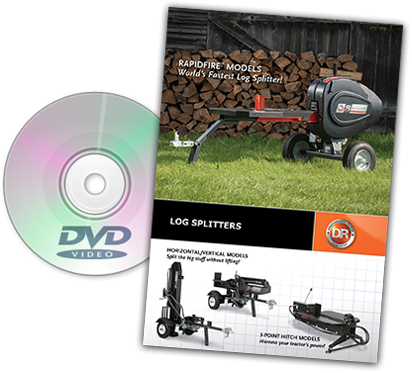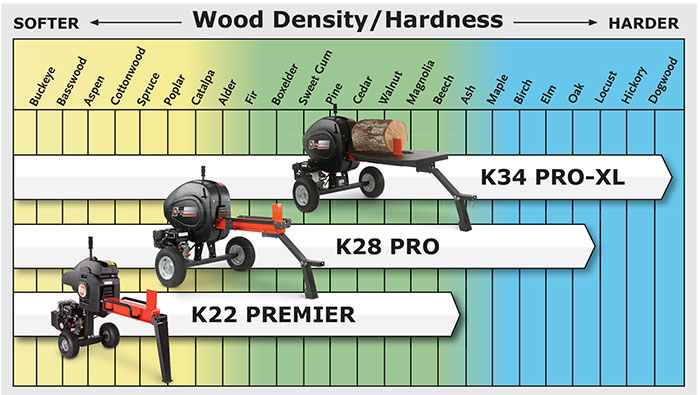How Much Log Splitting Power Do I Really Need?
When shopping around for log splitters, your biggest concern is probably deciding how much log splitting power you need. Is a small, portable 5-ton enough? Do you need the big 34-ton? What about these newfangled flywheel (also known as kinetic) log splitters? After all, you want enough power for all your projects, but without breaking the bank. So, what are the factors that affect how much power you need? Let’s discuss the most important ones:
Wood Density
The single most important factor in choosing your log splitting power is wood density. Hardwoods are naturally more difficult to split than softwoods, and require a stronger machine. And stringy or knotty tree species also require more power. So start with a good idea of the types of wood you will be splitting. If you typically order a load of dense hardwoods such as hickory, elm, oak, maple, and the like, look at the more powerful hydraulic or flywheel splitters. For example, all the DR RapidFire Flywheel Log Splitters are powerful enough to slice through medium-to-hard woods, but we recommend the larger K28 Pro or K34 Pro-XL models for those who have particularly hard woods:
Moisture Content
Another important factor is your wood’s moisture content. If you generally split already-seasoned (dry) wood, you’ll require less power. But if you prefer to split fresh, green, non-seasoned wood, you’ll need a bit more power. For example, consider elm wood on the chart above. If it’s freshly cut elm, we recommend the more powerful K34 Pro-XL model DR RapidFire. If it’s seasoned at least 6 months, however, the K28 Pro model would have you covered.
 Log Size
Log Size
A lot of log splitter companies will tell you that higher tonnage or a more powerful flywheel log splitter will be able to take on larger diameter logs. We’ve never found this to be a relevant factor when choosing a log splitter. After all, if you can split the log once, you can split it multiple times. And a larger diameter log will likely require multiple splits, but not necessarily more power. We’ve tested the DR RapidFire splitters on logs up to 30″ in diameter with no discernible drop in performance.
A more relevant metric is log length. Some splitters are designed with a longer splitting beam that can accommodate longer logs. This is an important spec to take into consideration as you shop, but is generally unrelated to log splitting power.
What other factors do you think are important in choosing log splitting power? Let us know in the comments section! And if you have any questions about the DR RapidFire Flywheel Log Splitter line and which model is best for your needs, give us a call at 1-800-687-6575.
Want to learn more about DR Log Splitters?
Order your FREE Buyer's Guide & DVD!

What's inside
- 24-Page Buyer's Guide
- Action-Packed DVD
- Money-Saving Promotions
